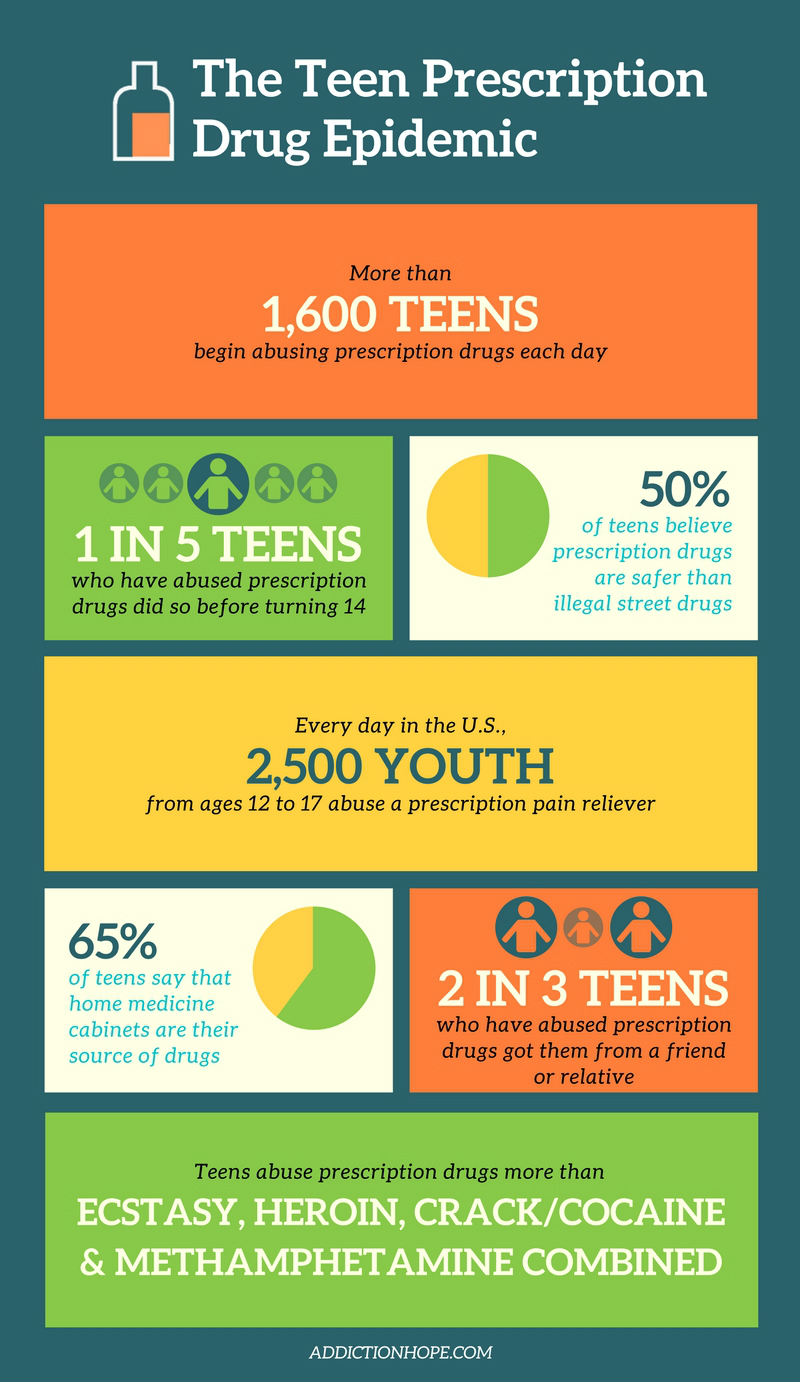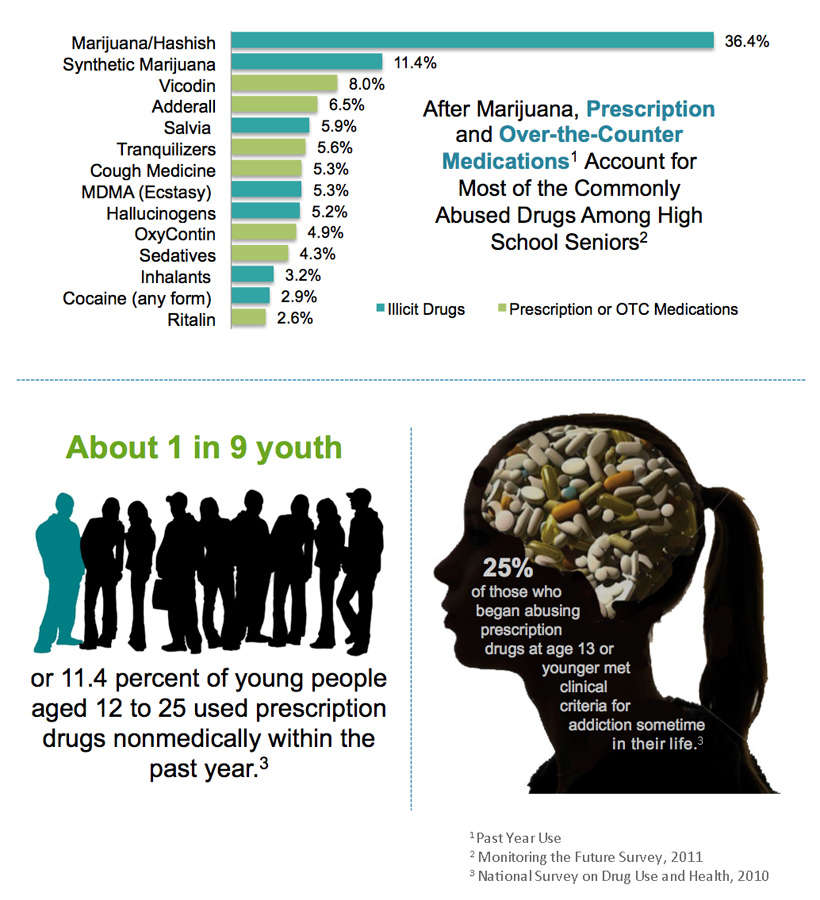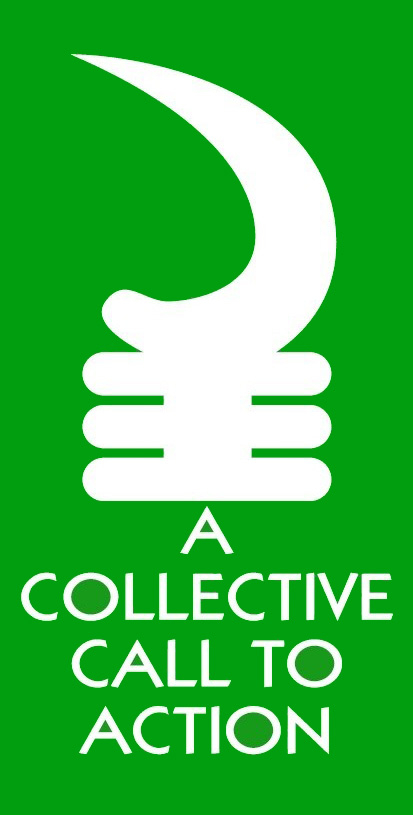Young adults (age 18 to 25) are the biggest abusers of prescription (Rx) opioid pain relievers, ADHD stimulants, and anti-anxiety drugs. They do it for all kinds of reasons, including to get high or because they think Rx stimulants will help them study better. But Rx abuse is dangerous. In 2014, more than 1,700 young adults died from prescription drug (mainly opioid) overdoses—more than died from overdoses of any other drug, including heroin and cocaine combined—and many more needed emergency treatment.
Tips for Taking Prescription Medicine
If a doctor prescribes a pain medicine, stimulant, or CNS depressant, follow the directions exactly. Also be sure to:
- Keep all doctor’s appointments. Your doctor will want you to visit often so he or she can see how well the medicine is working for you and adjust the dose or change the medication as needed.
- Make a note of the effects the drug has on your body and emotions, especially in the first few days as your body gets used to it. Tell your doctor about these.
- Keep any information your pharmacist gives you about any drugs or activities you should steer clear of while taking your prescription.
- Never increase or decrease the dose of your medicine without checking with your doctor’s office first.
Finally, never use someone else’s prescription. And don’t allow anyone to use yours. Not only are you putting others at risk, but you could suffer too: Pharmacists may be stopped from refilling a prescription if a medicine has been used up before it should be. And if you’re found giving medicine to someone else, it’s considered a crime and you could find yourself in court.
We can stem the tide! Keep reading to learn more about Prescription Drug abuse and how you can avoid the problems associated with drug abuse.

Adolescent abuse of prescription drugs—pain relievers, stimulants, tranquilizers, and sedatives—is a major health Concern. According to the 2007 National Survey on Drug Use and Health, 11.7 percent of 12– to l7-year-olds reported non-medical use of psychotherapeutic drugs at some point in their lives, and 3.3 percent reported such use in just the past month.1 In addition, the most recent Monitoring the Future study found:
- 9.7 percent of 12th graders reported past-year nonmedical use of Vicodin.2
- 4.7 percent of high school seniors reported past-year nonmedical use of OxyContin.3
- Past-year amphetamine abuse rates among students were 6.8 percent for 12th graders, 6.4 percent for 10th graders, and 4.5 percent for 8th graders.4
Overall, Vicodin has emerged as the prescription drug most commonly abused by teens.
Teenagers and young adults have a common misperception that medications prescribed by physicians are safe, even when used illicitly. However, a broad range of motivations have been associated with the abuse of prescription drugs by teenagers. Some teenagers seek to self-medicate (e.g., pain, anxiety, insomnia) by abusing their own or others’ prescriptions. Other teens use prescription drugs to enhance performance or abuse steroids to shape their bodies. Some teens take prescription drugs to get high or experiment, often combining them with alcohol.5 This spectrum of motivations requires intervention strategies that address the diversity of motivations within different target groups, as one size will not fit all.

Persons aged 12 to 17 who used prescription drugs non-medically in the past 12 months reported obtaining them from the following sources:
- 46 percent obtained the drugs free from a friend or relative.
- 20 percent bought or took the drugs from a friend or relative.
- 19 percent got the drug from only one doctor.
- 5 percent bought the medication from a drug dealer or other stranger.
- 0.2 percent reported buying the drug on the Internet.6
These numbers underscore the influence parents and relatives can have on teen access to prescription drugs.

Abuse* of prescription drugs can cause life-threatening consequences, including death from overdose, particularly when combined with other drugs or alcohol. Depressed respiration from painkiller abuse or heart attack/stroke from use of stimulants often underlies emergency room admissions related to prescription drugs. Prescription drug abuse also appears to be associated with a greater likelihood of risky behaviors in teens, including other substance abuse. A recent study found that teens who reported nonmedical use of prescription drugs to get high (rather than to self-medicate) were significantly more at risk to smoke cigarettes and/or marijuana, drink alcohol, and abuse several other drugs.7 Finally, adolescents who abuse prescription medications risk becoming addicted to them, a risk heightened for this age group.


- Click here to learn more about Depressants
- Click here to learn more about Stimulants
- Click here to learn more about Prescription Opioids


